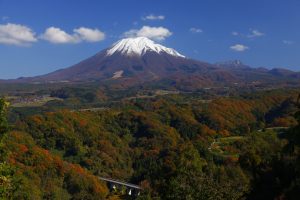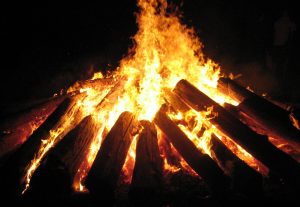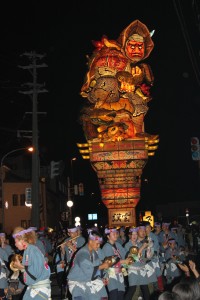JET Prefecture Round up! 09.25.17
By Suzanne Bhagan (Tottori Prefecture)
Konnichiwa past and present JETs! This autumn’s already steaming up with a host of events to keep you occupied. Here are some highlights you shouldn’t miss!
When: 1 October
Where: Ojiya, Niigata Prefecture
Forget human sumo wrestlers! Head to Tsunotsuki or bull versus bull wrestling in Ojiya to see which beast comes out on top!
When: 30 September
Where: Saihaku, Tottori Prefecture
It’s already fall so you know what time that is: time to tackle Daisensan, the tallest mountain in the Chugoku region!
Block 4 Welcome Party: Odo Beach Bonfire
When: 29 September
Where: Itoman, Okinawa Prefecture
Calling all Block 4 peeps! Bring some booze and marshmallows and get to know one another!
When: 30 September
Where: Mutsu, Aomori Prefecture
Cozy up with live music from over 20 local artists and groups and nosh some tasty food at this music festival.
When: 29 September – 1 October
Where: Fukue, Nagasaki Prefecture
Head to one of the main Goto islands for Nebuta parades, fireworks, dances, and a whole lotta fun!
When: 24 September – 1 October
Where: Miyako, Fukuoka Prefecture
Join in one of Kyushu’s three major float festivals that’s famous for its “fighting floats” where competing floats hit one other!
Japan Local: Tohoku Rokkon (Six Souls) Festival
Mel T (Aomori-ken, 2007-2012) is a Canadian living and working in Towada City, Aomori. For more information about events, sightseeing, restaurants, etc. in Towada City, and around Aomori Prefecture & Japan, visit her blog at http://towada-city.blogspot.com.
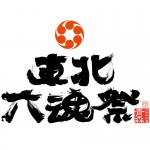 The Tohoku Rokkon (“Six Souls”) Festival is a two-day event where you can see six major Tohoku area summer festivals (one from each prefecture) all in one place!
The Tohoku Rokkon (“Six Souls”) Festival is a two-day event where you can see six major Tohoku area summer festivals (one from each prefecture) all in one place!
It was created to encourage the revival of the Tohoku area after the Great East Japan Earthquake & Tsunami of 2011. This year marks the sixth and final year of the event. It will be held in Aomori City from June 25-26, 2016.
Japan Local: Aomori 10 City Festival in Mutsu
Mel T (Aomori-ken, 2007-2012) is a Canadian living and working in Towada City, Aomori. For more information about events, sightseeing, restaurants, etc. in Towada City, and around Aomori Prefecture & Japan, visit her blog at http://towada-city.blogspot.com.
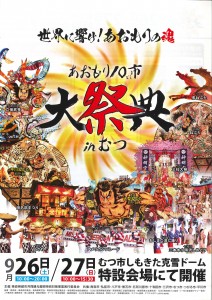 Miss out on the Aomori Summer Festivals and don’t want to wait a whole year for your next chance to see them?
Miss out on the Aomori Summer Festivals and don’t want to wait a whole year for your next chance to see them?
Check out the Aomori 10 City Festival in Mutsu from September 26-27th, 2015!
The Aomori 10 City Festival showcases major festivals, food, products and more from 10 cities around Aomori Prefecture: Aomori City, Hirosaki City, Hachinohe City, Kuroishi City, Goshogawara City, Towada City, Misawa City, Mutsu City, Tsugaru City, and Hirakawa City.
The must-see attraction is the Saturday night festival parade featuring Nebuta/Neputa floats, nagashi odori, etc., but you can also enjoy stage performances, appearances by mascot characters, delicious local foods and more at the event.
Japan Local: Aomori Summer Festivals
Mel T (Aomori-ken, 2007-2012) is a Canadian living and working in Towada City, Aomori. For more information about events, sightseeing, restaurants, etc. in Towada City, and around Aomori Prefecture & Japan, visit her blog at http://towada-city.blogspot.com.
It is a hot and muggy August night, but the air is filled with energy and a sense of anticipation. Then the sounds of flutes, drums, and chanting shouts erupt as people dressed in happi coats, yukata and all manner of costume fill the street, and enormous glowing figures emerge from between the darkened buildings.
There are many festivals across Aomori Prefecture and all of Japan during the summer, but Aomori’s three biggest and most famous summer festivals are Hirosaki Neputa, Aomori Nebuta, and Goshogawara Tachineputa.
All three feature impressive night parades of neputa/nebuta–large lantern floats with images and themes drawn from Chinese or Japanese literature, history, or religion–pulled by large groups of people often dressed in special costumes and accompanied by music from flutes, drums, and hand cymbals. The groups pulling the floats also use special shouts (different for each festival) to keep both the participants and spectators energized.
2013 Tokamachi Snow Festival
Posted by Benjamin Martin, a 5th year JET on Kume Island in Okinawa, publisher of the blog MoreThingsJapanese.com and author of the YA fantasy series Samurai Awakening (Tuttle).
 With its tall mountains and island geography, Japan has areas with heavy rain throughout the year and snowfall in the winter. Over the years, in many areas the snow has been changed from a hardship to benefit. The first place in Japan to create a snow festival is Tokamachi in Niigata prefecture.
With its tall mountains and island geography, Japan has areas with heavy rain throughout the year and snowfall in the winter. Over the years, in many areas the snow has been changed from a hardship to benefit. The first place in Japan to create a snow festival is Tokamachi in Niigata prefecture.
Tokamachi (十日町市) City is located in eastern Niigata prefecture. The names of that area are interesting in that they refer to the days it used to take to travel to them by foot. When we went there from the Echigo-Yuzawa station we passed several towns with these similar names such as Muikamachi (six-day town). The area has many small towns and is primarily full of rice farms. Niigata is famous for the delicious rice that the large amounts of snowfall help create.
This year’s snow festival took place between February 15 and 17th with the main stage events taking place on the 16th at the local Tokamachi Elementary School sports ground. As with all the nearby farms, the fields were topped with over two and a half meters of snow. While the snow is difficult to live with, the locals have found some ingenious ways to not only make it work for them, but to enjoy it as well.
 One of the major attractions of the Tokamachi snow festival are the snow sculptures. From small igloos to towering designs the sculptures turn all the excess snow into art. Local artists and teams transform piles of snow into everything from popular manga characters to full size replicas of buildings and ships. These are so popular that they have spread to other snow festivals such as the more famous one in Hokkaido.
One of the major attractions of the Tokamachi snow festival are the snow sculptures. From small igloos to towering designs the sculptures turn all the excess snow into art. Local artists and teams transform piles of snow into everything from popular manga characters to full size replicas of buildings and ships. These are so popular that they have spread to other snow festivals such as the more famous one in Hokkaido.
Every year the main stage for the event is constructed of snow. This year the design was a towering ship and compass. The portals were lighted and throughout the main event fireworks were lighted around it. It was a surprisingly long and steep walk from the lower town to the event but as guests of the local town government we had great tickets that put me 5 people back from the stage and only three from the walkway.
Originally, the focus of the festival was to highlight the beautiful kimonos created in Niigata. The main event after the opening speeches is still a fashion show of kimonos which are especially striking against the pure white of the snowy stage. Following the show were performances by artists Junichi Inagaki, Becky, and LG Monkees. As well as appearances by the local school children singing along with Tetsu and Tomo who helped to MC.
 Despite the cold weather and snow falling throughout much of the show, huge numbers of people came out to see the show and it was well worth a few cold toes. The entire event was well-organized with crowd control built into the area with snow dividers. While we weren’t allowed to take photos or video of the performers, we were allowed to take pictures of the stage and fashion show. We didn’t have time to see every sculpture but I did catch a few on our way out. I hope you enjoy a little look at a wonderful town and event. I’ll share more on the trip soon.
Despite the cold weather and snow falling throughout much of the show, huge numbers of people came out to see the show and it was well worth a few cold toes. The entire event was well-organized with crowd control built into the area with snow dividers. While we weren’t allowed to take photos or video of the performers, we were allowed to take pictures of the stage and fashion show. We didn’t have time to see every sculpture but I did catch a few on our way out. I hope you enjoy a little look at a wonderful town and event. I’ll share more on the trip soon.
For more photos from the event visit MoreThingsJapanese.com
**Don’t forget to enter the TWO free giveaways for signed copies of my book plus extras. Enter on morethingswriting.com and/or Goodreads!**
2013 Sakura Festival in Kumejima
Posted by Benjamin Martin, a 5th year JET on Kume Island in Okinawa, publisher of the blog MoreThingsJapanese.com and author of the YA fantasy series Samurai Awakening (Tuttle).
 January 26th marked the beginning of the 2013 Kumejima Sakura Festival. Sakura (Cherry Blossoms) are an important symbol marking the change of seasons in Japan. As the weather begins to warm, cherry trees sprout beautiful flowers in a range of colors from white to red. Since Okinawa is so far south, cherry blossoms begin to arrive in January. They work their way north through April. During this time, people flock to areas with cherry trees to picnic, drive, and see the beautiful flowers and wildlife.You might have noticed the new header, a compilation of 3 shots taken of a Mejiro (Japanese white-eye) in cherry trees I caught the Friday before the festival along the Ara Forest path.
January 26th marked the beginning of the 2013 Kumejima Sakura Festival. Sakura (Cherry Blossoms) are an important symbol marking the change of seasons in Japan. As the weather begins to warm, cherry trees sprout beautiful flowers in a range of colors from white to red. Since Okinawa is so far south, cherry blossoms begin to arrive in January. They work their way north through April. During this time, people flock to areas with cherry trees to picnic, drive, and see the beautiful flowers and wildlife.You might have noticed the new header, a compilation of 3 shots taken of a Mejiro (Japanese white-eye) in cherry trees I caught the Friday before the festival along the Ara Forest path.
The Festival
As part of the sakura season, many locals often have festivals to support tourism, create entertainment for locals, and to simply celebrate the beautiful surroundings. This year the Kumejima Sakura Festival took place on January 26th, a day of sun and generally great weather (I got sunburned in January. It was also a little windy.)
 On Kume Island, the festival takes place at Daruma Mountain Park in the western/central part of the island. The festival was set up in a clearing surrounded by cherry trees. After an opening ceremony, new cherry trees were planted for the future. Arrayed around the clearing were many tents with local restaurants serving specialty foods. This year, the restaurants competed in a competition to see which one had brought the most popular item.
On Kume Island, the festival takes place at Daruma Mountain Park in the western/central part of the island. The festival was set up in a clearing surrounded by cherry trees. After an opening ceremony, new cherry trees were planted for the future. Arrayed around the clearing were many tents with local restaurants serving specialty foods. This year, the restaurants competed in a competition to see which one had brought the most popular item.
There were several live performances from local groups including Nankuru Sanshin and the “Super Bridal Band,” as well as karate demonstrations and other entertainment. The band I play with (Super Bridal Band started up a few years ago to play at my boss’s wedding, I joined a bit after moving here) just after the opening ceremony. There’s a compilation video below of our set.
 After we finished our set, I quickly jumped over to the 89.7 FM Kumejima radio booth to do my weekly Haisai English! show live from the event. It was a lot of fun despite a few technical snafus from going on location.
After we finished our set, I quickly jumped over to the 89.7 FM Kumejima radio booth to do my weekly Haisai English! show live from the event. It was a lot of fun despite a few technical snafus from going on location.
For more on Sakura and this year’s Festival, visit MoreThingsJapanese.com
Local Industrial Festival Reveals a Wealth of Culture
Posted by Benjamin Martin, a 5th year JET in Okinawa, publisher of the blog MoreThingsJapanese.com and author of the YA fantasy novel Samurai Awakening (Tuttle).
The industrial Fair, or sangyo matsuri in Japanese, is a fixture in the annual event calendar on my island. From the English translation you might think of cars, heavy manufacturing, and other well-known industry. In Japan, though, many products are made by very small local companies rather than in large factories. Even when big factories are necessary, there are often many small shops acting as suppliers. Taken to a further level, small rural communities without those major industries often have a vibrant industrial community supporting local needs. You might be surprised to learn about all the things going on around you in small local Japan.
Recently, our island had its yearly sangyo matsuri, and event designed to inform locals about the various products made on Kumejima and also to sell those products. One of the local kaizen (community) centers was taken over by scores of tables and activities for everyone to enjoy.
Checkout MoreThingsJapanese.com for more photos and a video on the Agricultural, Oceanic, and Cultural sights at this unique event.
2012 Kitadaito Festival Day Two
The 2012 Kitadaito Festival was a two-day event in September marking an important time of community inclusion and tradition. The second day of the Festival was on the 23rd and, as in years past, featured sumo competitions as a traditional Japanese offering to the kami and ancestors of the village. If you haven’t already, be sure to check out my post on day one. Below is a video showing excerpts from the day, with more information and photos farther down. Enjoy!
Sumo Competitions
The second day began in the morning on Sunday around 9:00. Villagers gathered again before the Daito-gu shrine. There, a Shinto priest led a ceremony blessing both the sumo ground and the people. New babies were also brought before the shrine by their parents so that the adults could ask for safe and prosperous lives for their children.
After the ceremonies were complete, the villagers settled in to watch Edo and Okinawan Sumo competitions. Although Kitadaito is in Okinawan Prefecture, it was originally settled by people from Hachijo Island, which means the traditions of the island are a unique mix of mainland Japan and Okinawa. At the Daitogusai festival, both types of sumo take place. Pre-school through junior high students take part in edo style sumo.
… Read the rest and see more photos on MoreThingsJapanese.com!.
2012 Kitadaito Festival Day 1
Posted by Benjamin Martin, a 5th year JET in Okinawa, publisher of the blog MoreThingsJapanese.com and author of the fantasy novel Samurai Awakening (Tuttle).
Every year on September 22 and 23 Kitadaito Village celebrates its largest Festival. These dates mark the beginning of autumn. Kitadaito, also known as north Borodino island, is a place of 12sq kilometers 320 kilometers east of the Okinawan mainland. It is unique in that it was settled by residents of Hachijo Island (near Tokyo) but is part of Okinawa Prefecture. Over the past 100 years the island has become a unique chanpuru (mix) of both cultures.
After graduating from the University of Arizona, I spent three years living and teaching on Kitadaito, and returned this year after more than a year on Kumejima. It was great to re-experience old memories and make new ones as the festival has changed since my time there. Watch the accompanying video for a chance to experience a few bits from this truly unique day.
Read more about the Kitadaito Festival on Ben’s blog — MoreThingsJapanese.com
I’ll Make It Myself!: “Tanabata Beer Festa Toyama 2012”
L.M. Zoller (CIR Ishikawa-ken, Anamizu, 2009-11) is the editor of The Ishikawa JET Kitchen: Cooking in Japan Without a Fight. A writer and web administrator for The Art of Travel (formerly The Art of Japan: Kanazawa & Discover Kanazawa), ze also writes I’ll Make It Myself!, a blog about food culture in Japan, and curates The Rice Cooker Chronicles, a series of essays by JETs and JET alumni on the theme of cooking/eating and being alone in Japan.
New Rice Cooker Chronicles submissions always welcome. Just e-mail it to jetwit [at] jetwit.com.

The Tanabata Beer Festa Toyama, held the first full weekend of July each year in Toyama City, Toyama, is one of Hokuriku’s only beer festivals. I hopped the train south with a couple of our friends for an afternoon of craft beer. I hadn’t been to a beer festival since I left Michigan three years ago, so I was beyond thrilled.
What does one drink when confronted with 20 breweries’ worth of Japan’s finest craft beer? Make a game plan. When I attended the Michigan Brewers’ Guild Summer Beer Festival, I decided to only drink cherry beers, as those are much harder to get on draft than stouts. This time, after three years of living deprived of regular access to stouts, I circled 5 stouts I’d like to try, got a pizza for lunch, and set to work drinking.


